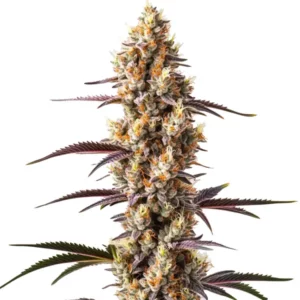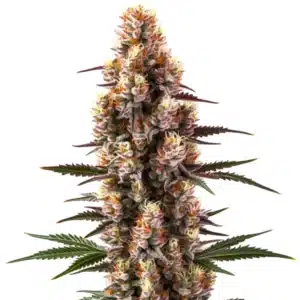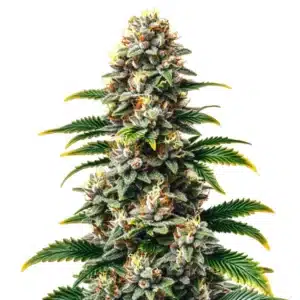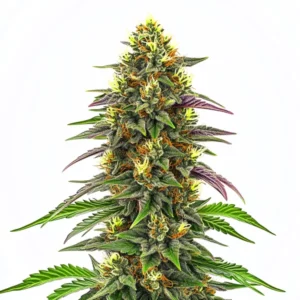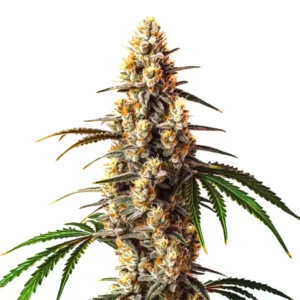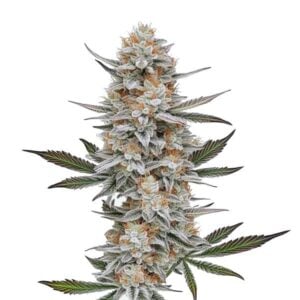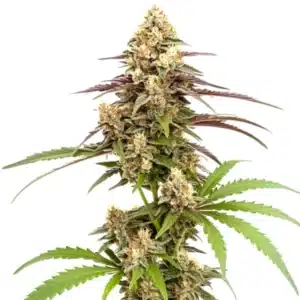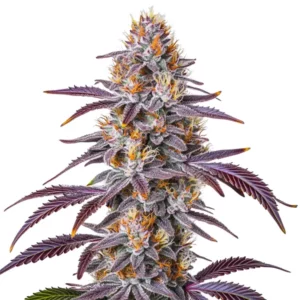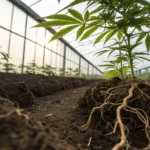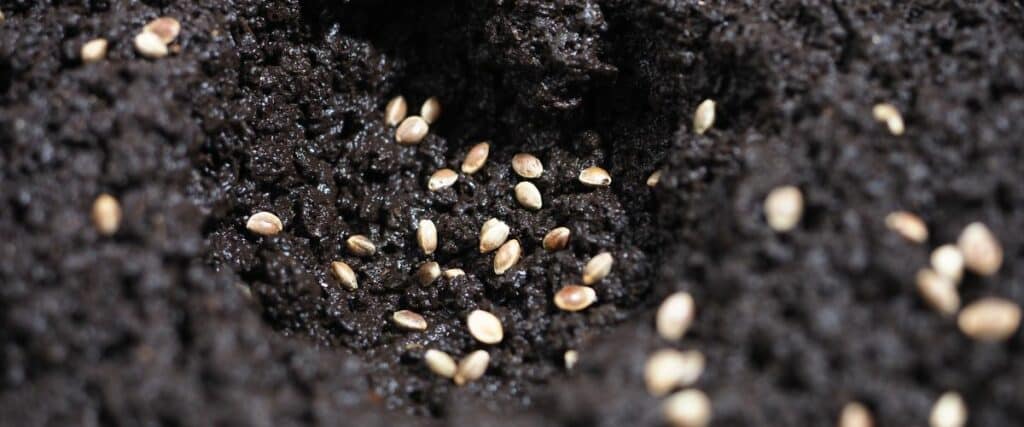
The Best Soil for Marijuana to Boost Your Yield
Have you ever wondered what it takes to cultivate top-shelf, award-winning cannabis? If so, you’ve likely considered what constitutes the best soil for marijuana. Fortunately, we’re here today to delve deep into the world of soil and uncover the secrets to creating the ideal environment for marijuana plant growth.
We’ll explore the importance of pH levels, essential soil nutrients, various soil textures, and much more. With a bit of our expert guidance and your dedicated care, your cannabis plants will thrive in no time. So, sit back, relax, and let’s dig into the root of the matter, the best soil for marijuana!
Recommended Strains
Rainbow Kush
|
|
THC | 17% - 22% (Medium) |
|
|
Type | Feminized |
|
|
Yield | Medium |
|
|
Phenotype | 50% Indica / 50% Sativa |
Rainbow Kush Auto
|
|
THC | 15% - 18% (Medium) |
|
|
Type | Autoflowering |
|
|
Yield | Medium |
|
|
Phenotype | 55% Indica / 45% Sativa |
The soil important for growing marijuana?
The best soil for marijuana is essential for cultivating robust and high-yielding cannabis plants. Quality soil goes beyond merely providing a surface for growth; it creates an environment that promotes optimal plant development, efficient nutrient absorption, and overall plant health.
Here are some ways in which the right soil can influence the health and success of your cannabis plants:
1. Essential Nutrients
The best soil for marijuana acts as a vital reservoir for essential nutrients, ensuring optimal growth and bud production. Cannabis plants need a variety of macro and micronutrients, including nitrogen, phosphorus, potassium, calcium, and magnesium, to thrive. The soil’s nutrient composition directly impacts their availability to cannabis plants. Therefore, premium soil for marijuana cultivation contains all these crucial nutrients, providing the foundation for healthy and productive plants.
2. Optimal pH Level
The pH level of soil is a critical factor in cannabis cultivation, as it affects nutrient uptake. Cannabis plants flourish in slightly acidic to neutral soils, with an ideal pH range of 6.0 to 7.0. Adjusting soil properties, including pH, can significantly influence plant growth and yield. Maintaining the correct pH level ensures that nutrients remain accessible for absorption, preventing deficiencies or toxicities that could impede plant development.
3. Beneficial Microbes
Soil is much more than just dirt; it is a vibrant ecosystem filled with beneficial microorganisms. These soil microbes play a crucial role in nutrient cycling, breaking down organic matter, and improving soil structure. They provide an alternative nutrient source for cannabis plants by enhancing nutrient availability and absorption. Consequently, a soil rich in beneficial microbes contributes to vigorous plant growth and increased yield production.
By focusing on these key factors—essential nutrients, optimal pH level, and beneficial microbes—you can ensure you are using the best soil for marijuana, leading to healthier plants and better yields.
4. Drainage
When cultivating cannabis, it’s crucial to recognize that these plants grow rapidly and are quite thirsty. However, cannabis roots also need ample oxygen, making it essential to have soil with an optimal water-air ratio for proper drainage.
After choosing your growing medium, ensure you select a container that promotes good aeration and nutrient delivery. It’s vital that this container has holes to facilitate proper drainage flow.
5. Texture
Soil texture plays a significant role in the successful cultivation of marijuana. Cannabis plants thrive in loose, light soil, which aids in root development, enhances oxygen delivery to the roots, and supports ideal drainage conditions.
6. Water Retention
Consistent watering is key to the optimal growth of cannabis plants, which typically require about 3-6 gallons of water daily, depending on their size, strain, and growing medium. Therefore, it’s essential to use soil that retains water effectively while still maintaining proper drainage to meet the plants’ needs.
Promos & Deals
4 different natural soil
Now we will see 4 different types of soil that you can find and which are worth knowing to decide whether or not it can be used to grow cannabis. The objective of this recommendation is that when choosing the substrate for growing your cannabis plants you can distinguish which soil textures are best for your plants.
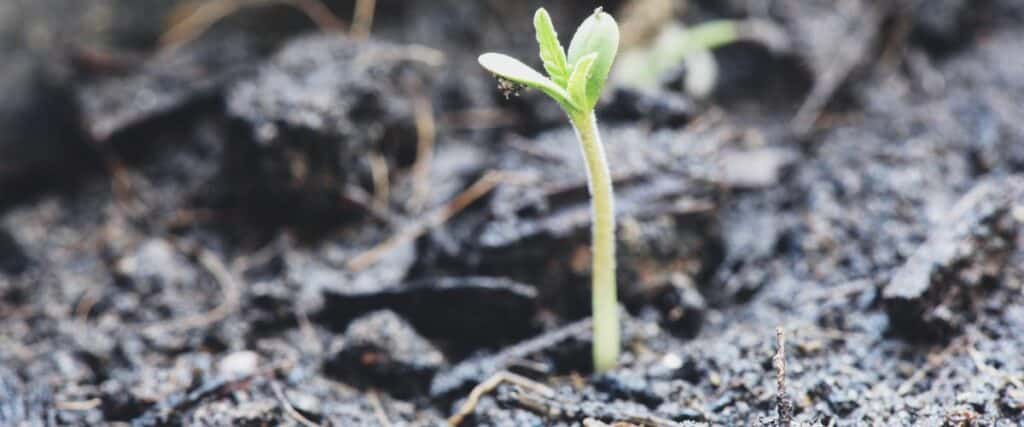
Sandy Soil
Sandy soil is an excellent option for growing marijuana due to its light and airy composition. This type of soil has a coarse texture that provides excellent water drainage, making it easier to manage. However, sandy soil has poor water and nutrient retention, causing it to dry out quickly and lose nutrients when watered or rained on. Additionally, sandy soils often have a low pH, making them more acidic.
Key Characteristics of Sandy Soil:
- Easy to Work With: Light and coarse texture
- Good Drainage: Facilitates effective water flow
- Poor Retention: Loses water and nutrients quickly
- Acidic Nature: Often has a low pH
Silty
Silty soils provide a good balance of water drainage and water retention, making them ideal for growing marijuana. These soils are rich in minerals and organic materials, which are essential for nourishing the plants. However, a significant disadvantage of silty soils is their tendency to compact, potentially limiting the plant’s access to air, water, and nutrients.
- Easy to work with due to its medium-coarse texture
- Excellent water retention capabilities
- Adequate water drainage
- Contains beneficial nutrients and organic matter
- Susceptible to compaction
Clay
Clay soils are known for being heavier and denser compared to sandy or silty soils. Due to their tendency to clump and become compacted, they can be challenging to manage. However, clay soils excel in water retention, although this benefit comes at the cost of poor drainage. These soils are often some of the most fertile, rich in a variety of nutrients and minerals that support plant growth.
- Hard to work with: Heavy and dense composition
- Excellent water retention
- Poor water drainage
- Nutrient-rich: Contains essential minerals for plant nourishment
- Prone to compaction
For those seeking the best soil for marijuana, clay soils offer both challenges and benefits, making them a unique option for cultivation.
Loamy
Loamy soils, a blend of sand, silt, and clay, are ideal for growing marijuana. These soils maintain a balanced proportion of each component, avoiding extremes and providing a harmonious environment for plants. Loamy soils are easy to work with, offering excellent water retention and drainage. Additionally, they are rich in minerals and nutrients essential for healthy plant growth.
- Easy to Work: Loamy soils are airy and straightforward to handle.
- Perfect Balance: A combination of sand, silt, and clay creates an optimal growing medium.
- Water Management: Exceptional water retention and drainage capabilities.
- Nutrient-Rich: Packed with nutrients and minerals to support robust plant health.
- Amendments Required: Natural soils often need enhancement to achieve a loamy texture.
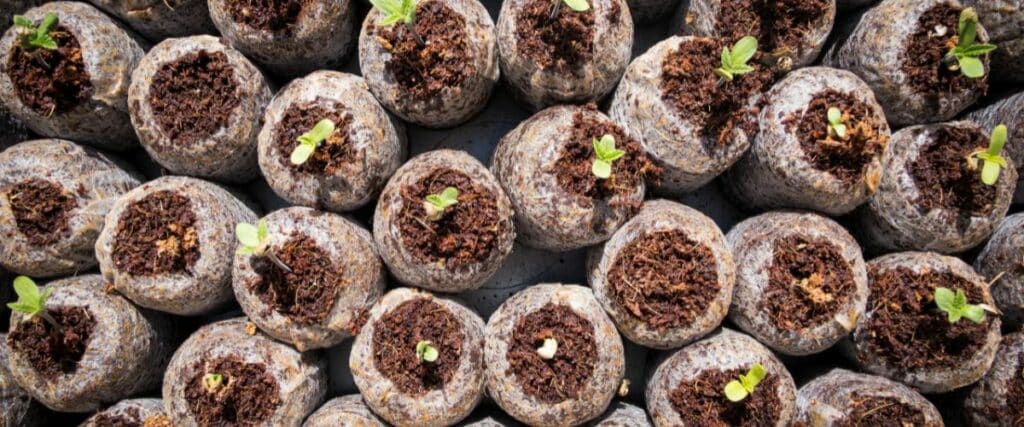
How are the best soil for growing indoor and outdoor?
When considering the best soil for marijuana, it’s essential to distinguish between indoor and outdoor growing environments. The soil you use indoors should differ from the one used outside. Here’s what to look for when purchasing pre-mixed soil for your indoor cannabis plants:
- High Porosity: Indoor cannabis plants thrive in soil with high porosity, which ensures good airflow to the roots and helps prevent overwatering.
- Fast Draining: To avoid waterlogged roots and root pathogens, the soil should drain quickly. Incorporating materials like perlite or vermiculite can improve drainage.
- Moderate Water Retention: While fast drainage is vital, the soil should also retain moderate moisture between waterings to provide a consistent water supply to your plants.
- Balanced Physical and Chemical Properties: Choose a soil mix with balanced texture and structure. Additionally, ensure the soil has the right chemical properties, including a pH level of around 6.0 to 7.0, which is ideal for indoor cannabis growth.
By keeping these factors in mind, you’ll be better equipped to select the best soil for your indoor marijuana plants, leading to healthier growth and higher yields.
Principal elements of standard soil for cannabis
There are numerous ways to amend soil to better meet the needs of cannabis plants. Some store-bought soils, especially those formulated for cannabis, might already include these amendments, so it’s wise to check the ingredients list when purchasing.
Coco Coir: Derived from coconut husks, coco coir is a versatile fiber that can be used as a standalone growing medium or added to soil to enhance its texture and water retention.
Perlite: This natural volcanic glass has a granular texture and is typically white or gray. Adding perlite to soil improves aeration and drainage, making it more suitable for cannabis cultivation.
Vermiculite: A naturally occurring mineral, vermiculite is often used to lighten soil texture and boost moisture retention, which benefits cannabis plants.
Clay Pebbles: Ideal for container gardening, clay pebbles can be placed at the bottom of pots to aid drainage and prevent water pooling, thereby avoiding excess moisture around the roots. They can also be used as mulch on the soil surface.
Worm Castings: The nutrient-rich waste from worms enhances soil texture, drainage, and water retention. Additionally, worm castings provide a valuable source of micro and macronutrients for cannabis plants.
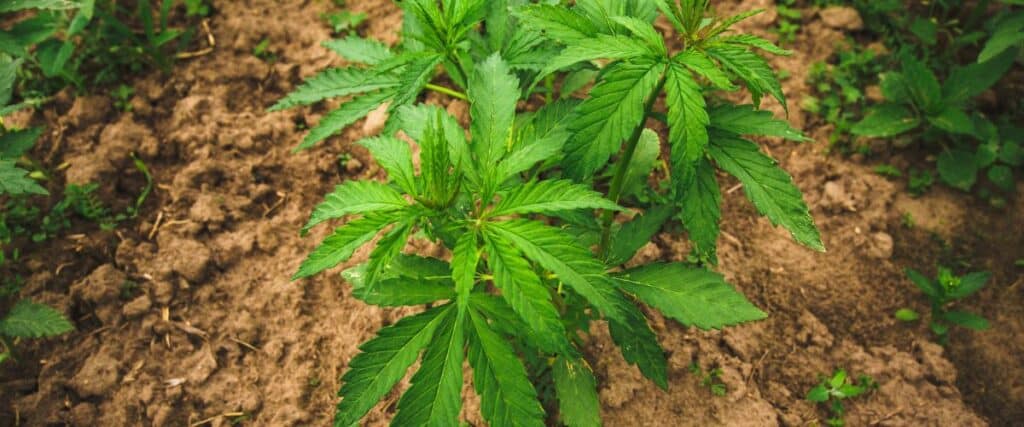
Make Your Own Super Soil For Cannabis
Creating your own super soil might seem intimidating, but it’s straightforward. Essentially, you begin with high-quality organic soil and enhance it with natural additives beforehand. By the time you’re ready to plant your seeds, you’ll have a nutrient-rich growing medium prepared to support healthy, fragrant buds.
Step 1: Purchase Your Base Soil
Selecting the right soil base is crucial for cannabis growth. Cannabis thrives in well-aerated, permeable soil that leans slightly acidic (ideal pH 6–6.5). Opt for organic soil containing ingredients like worm castings, compost, coco coir, and sand. While these soils are more costly, they significantly benefit plant health and yield. If such a soil isn’t available, neutral potting soil from a local nursery is a suitable alternative, preferably slightly acidic.
Step 2: Enrich Your Soil
Begin by placing soil in a large container and aerating it with a garden fork. Once loosened, enrich the soil with natural additives to create a fertile growing medium for cannabis. Blend the ingredients thoroughly using the garden fork.
The quantities of each ingredient for your super soil depend on the initial soil quality and preparation time. For optimal results, prepare the soil at least six months before planting to allow proper breakdown of additives. This process mimics natural topsoil rich in nitrogen, phosphorus, potassium, and essential micronutrients.
However, this method requires time. Compost, for instance, may take months to years to fully decompose, influencing your planting schedule. For immediate planting, adjust ingredient amounts cautiously to avoid overly nutrient-rich (“hot”) soil that could harm plants.
As a starting guide, consider these ratios:
- 4 parts starter soil
- 1 part worm castings
- 1 part coco coir
- 1 part perlite/vermiculite (for drainage)
- 5–5% guano
- 5% bone and/or blood meal
When adding micronutrients like Epsom salts, azomite, lime, and dolomite, follow package instructions closely to prevent nutrient burn.

Step 3: Prepare Your Super Soil
For a quicker method to prepare cannabis soil at home, mix in your pots:
- 3 parts organic starter soil
- 1 part perlite
- 1 part worm castings
- ½ cup greensand
- ⅓ cup guano
- ½ cup dolomite lime
Combine thoroughly with a garden fork, then soak the mixture in pure water for at least two days, ensuring it stays consistently moist. This step prevents the soil from being too nutrient-rich for seedlings. Allow excess water to drain and let the soil mostly dry before planting. Initially, water with plain water for the first three waterings.
Step 4: Avoid Direct Planting Into Homemade Super Soil
Note that homemade super soil is highly nutrient-rich and unsuitable for seeds, seedlings, or clones due to the risk of nutrient burn. Germinate seeds and keep young plants in neutral soil for at least two weeks. Transplant only once they have well-developed roots and at least three nodes with large leaves.
Now you know how to make your own substrate to have a high production of buds in the crop. You can also recognize which elements make up a substrate and which are the most suitable for having strong and robust plants. Don’t forget to follow the steps and also delve into other knowledge to achieve success in cultivation.


